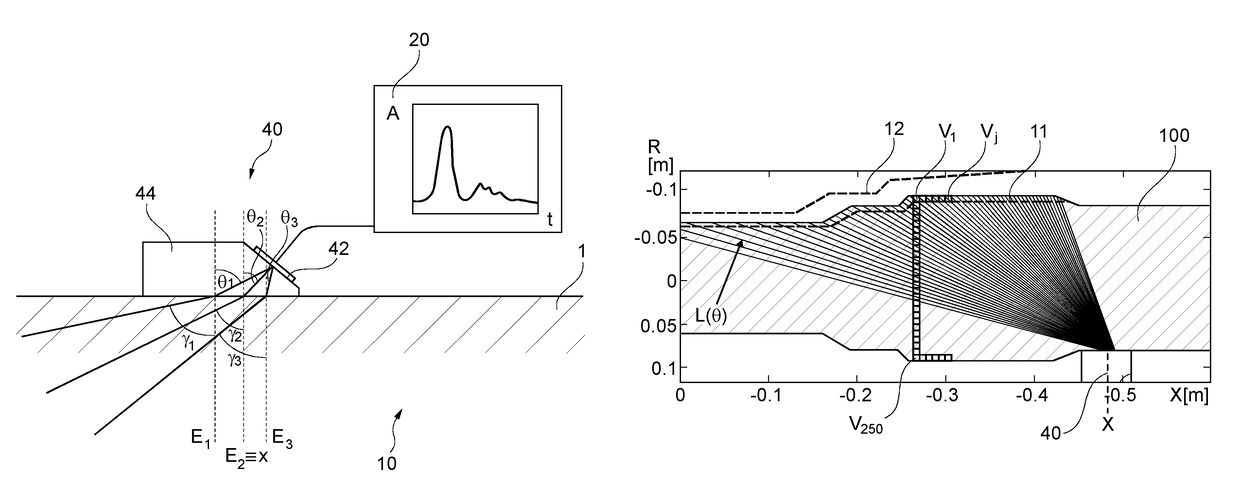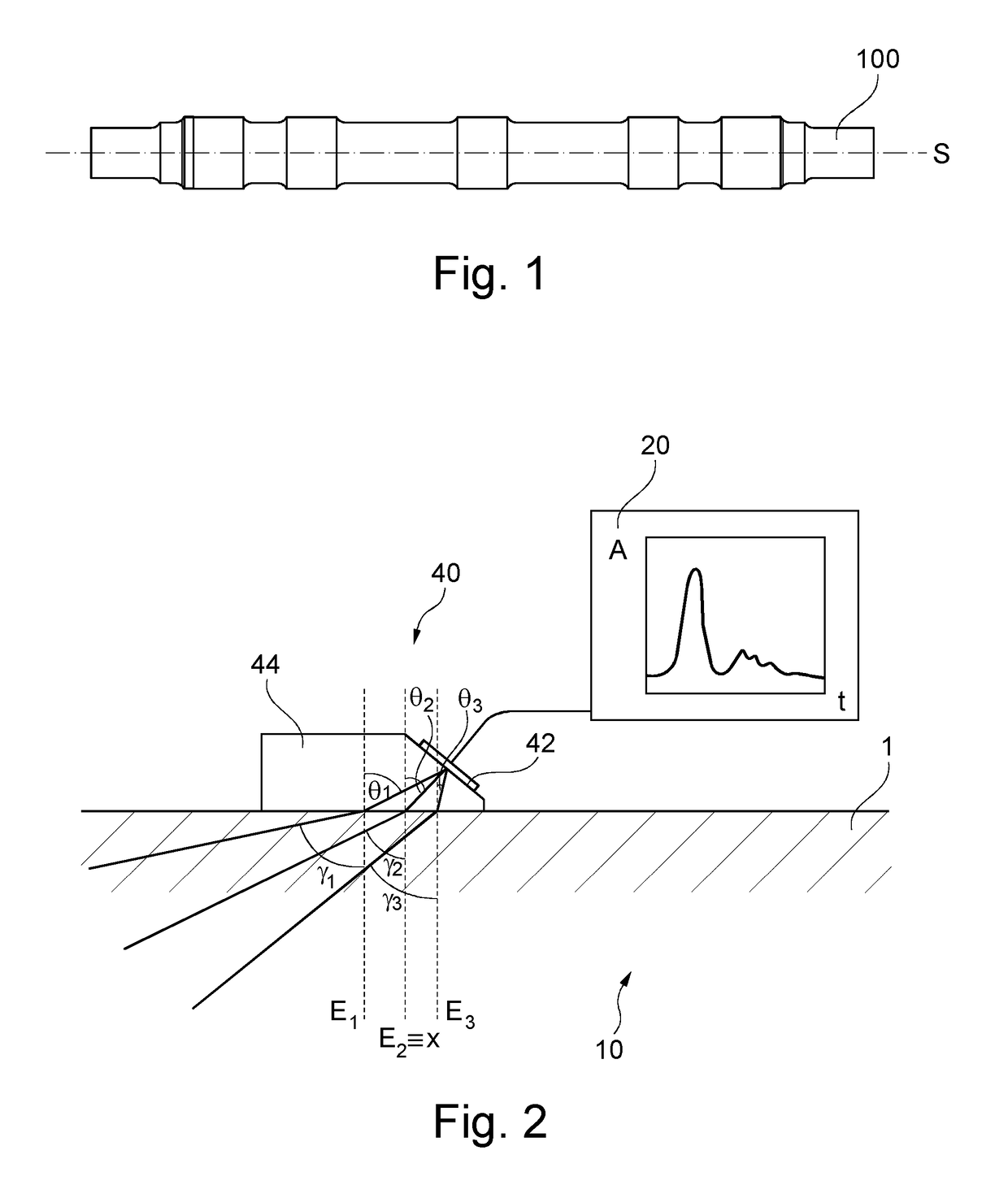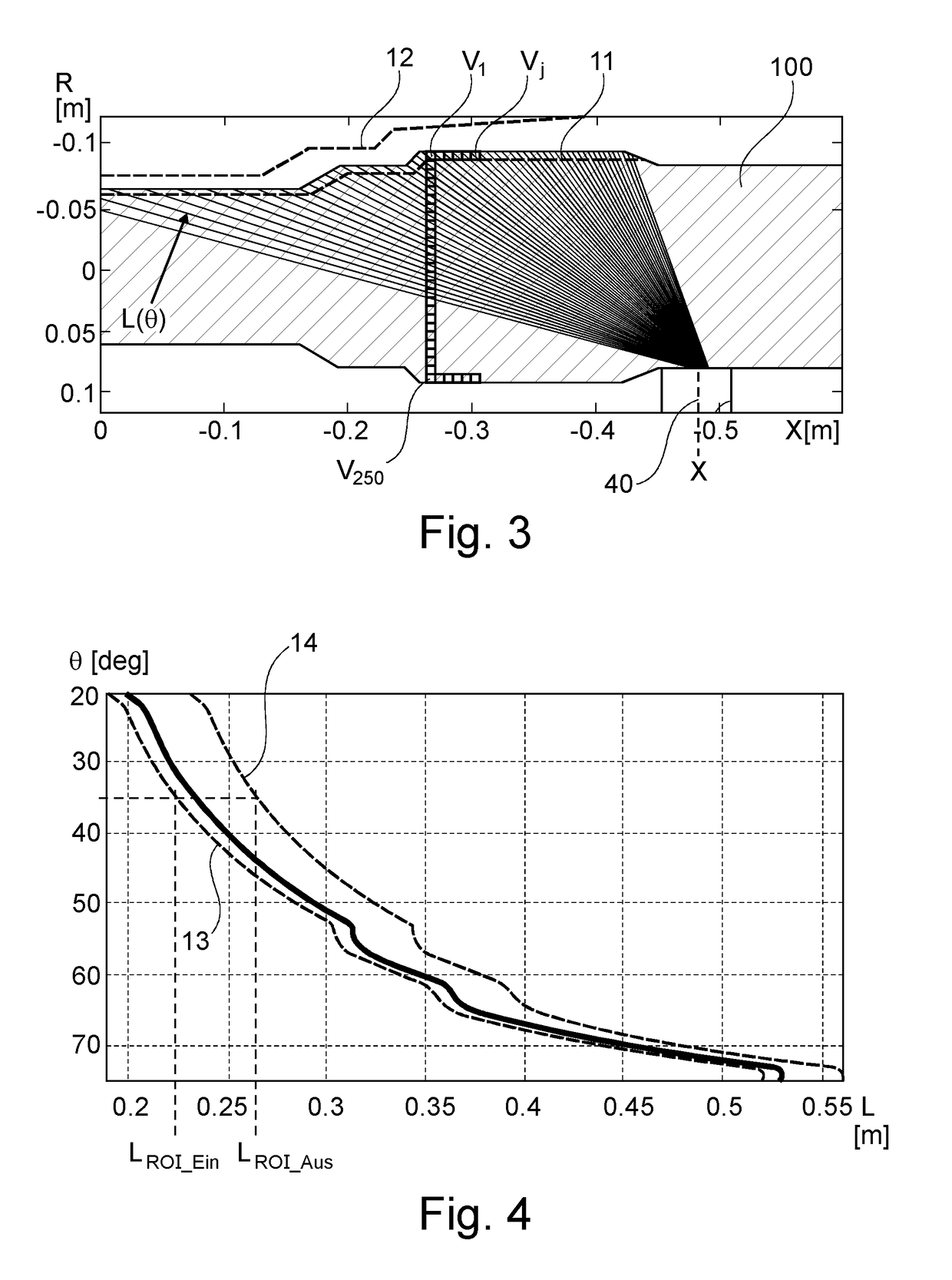Method and device for the non-destructive inspection of a rotationally symmetric workpiece having sections with difference diameters
a technology of rotationally symmetric workpieces and inspection devices, which is applied in the direction of instruments, material magnetic variables, and processing detected response signals, can solve the problems of difficult inspection tasks, the most frequent wear phenomenon observed in the shafts of wheel sets of rail vehicles, and the danger of geometric echoes “masking” relevant signals, etc., to achieve the effect of significantly improving the signal-to-noise ratio
- Summary
- Abstract
- Description
- Claims
- Application Information
AI Technical Summary
Benefits of technology
Problems solved by technology
Method used
Image
Examples
Embodiment Construction
[0068]FIG. 1 shows a side view of a typical solid shaft 1 of a wheel set of a rail vehicle. It is a rotationally symmetric forging with a diameter changing from section to section, as becomes clear from FIG. 1. In particular, the shaft 1 comprises different sections with a constant diameter, which are provided for accommodating the wheel hubs, the rolling bearings, with which the solid shaft is rotatably mounted on the rail vehicle, and a centrally disposed brake disk. As a forging, a solid shaft according to FIG. 1 typically has a certain anisotropy of the sound velocity for ultrasound, which is produced by local structural changes caused by the forging process. In this case, the solid shaft 1 is rotationally symmetric to the drawn-in axis of rotation S.
[0069]FIG. 2 shows a first exemplary embodiment of a testing device 10, which comprises a control unit 20 and a test probe 40 connected to it. The test probe 40 comprises a segmented ultrasonic transducer 42 of the phased array type...
PUM
| Property | Measurement | Unit |
|---|---|---|
| azimuth angles | aaaaa | aaaaa |
| azimuth angles | aaaaa | aaaaa |
| insonification angle Theta | aaaaa | aaaaa |
Abstract
Description
Claims
Application Information
 Login to View More
Login to View More - R&D
- Intellectual Property
- Life Sciences
- Materials
- Tech Scout
- Unparalleled Data Quality
- Higher Quality Content
- 60% Fewer Hallucinations
Browse by: Latest US Patents, China's latest patents, Technical Efficacy Thesaurus, Application Domain, Technology Topic, Popular Technical Reports.
© 2025 PatSnap. All rights reserved.Legal|Privacy policy|Modern Slavery Act Transparency Statement|Sitemap|About US| Contact US: help@patsnap.com



